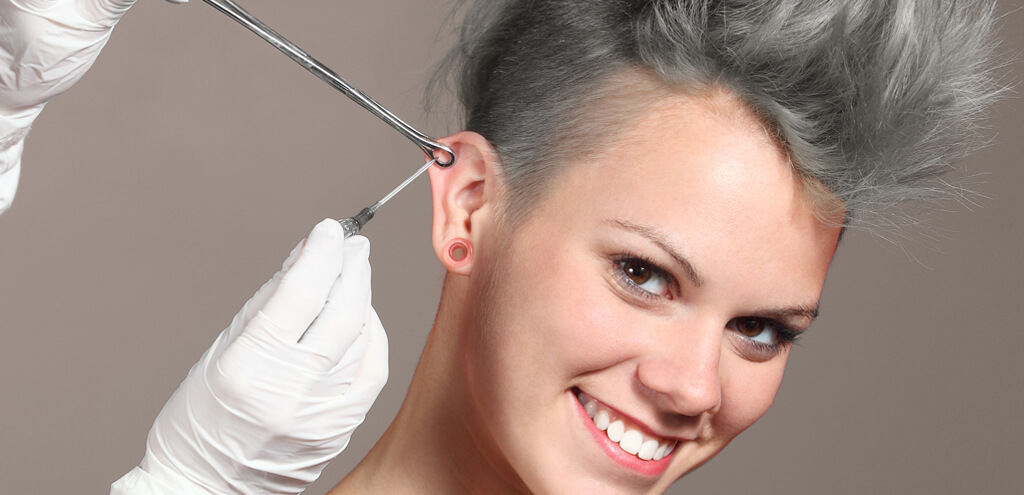
6
Sep
How To Choose Body Jewelry
0
0
0
While most of us know our ring size, buying jewelry for body jewelry is a little different. Different placements, sizes, and materials can make the process confusing, especially for those not familiar with the terms involved. It can, therefore, be difficult to decide on the right body jewelry for you.
In this guide, we will explain exactly how to choose body jewelry to make sure you’re both happy with the fit, feel, and style of your piece. We will also explain the importance of using a reputable supplier like Salamander Jewelry when purchasing body jewelry in bulk to ensure high-quality goods and fantastic service.
- Determine the placement

If you’re already pierced or are interested in getting a piercing, it’s important to consider placement.
While to the untrained eye, a nose piercing, for example, is the same as any other, in reality there is a lot of subtle differences in placement. Piercing location determines the type of body jewelry that can be worn and the final look that it gives.
A piercing high up the nostril, for example, may preclude the use of nose rings. A piercing on different parts of your ear, too, determines what kind of jewelry you can wear. A tragus piercing is not the same as a daith. While getting familiar with these differences can take time, it’s useful for understanding your jewelry options.
First things first, then, figure out the exact type of piercing you have or are going to have. This will let you search for jewelry suitable for that piercing.
- Choose the right size
There are two main considerations when looking at the size of body jewelry. These are the gauge and the length of your piercing between holes.
Gauge
Body jewelry uses the term gauge to determine the thickness of an item.
While some jewelers will use a “ga” measurement to indicate the gauge, most online stores will list the thickness in terms of millimeters (mm). The thinnest gauge available is around 0.8mm (20ga). 0ga bars measure around 8-10mm with even thicker gauges available.
Body jewelry tends to come in set gauges for different placements. A common size for belly, tongue, and nipple bars or shields is 1.6mm (14ga). Likewise, most cartilage ear-piercing jewelry uses a set size of 1.2mm (16ga).
The gauge is ultimately determined by the size needle that the piercer used, though stretching can occur. Commonly, though, these are the gauges for most types of piercing:
| Body Jewelry Size Guide | |
| Ear (cartilage) | 1.2mm (16ga) |
| Ear (lobe) | 1.00mm (18ga) |
| Belly | 1.6mm (14ga) |
| Tongue | 1.6mm (14ga) |
| Nipple | 1.6mm (14ga) |
| Nostril | 1.00mm (18ga) |
| Septum | 1.2mm (16ga) |
| Eyebrow | 1.2mm (16ga) |
While these are the most common gauges used for piercings of these kinds, it’s important to ask your piercer if you are unsure.
Jewelry size
When choosing body jewelry the “size” listed will refer to the length of the bar. This will help you determine if the piece is suitable for your piercing. A 10mm titanium dermal anchor, for example, is not suitable for those with piercings 12mm apart.
Think of the size, then, as the length of the bar, and determine whether this will fit your body piercing.
- Choose safe materials
Some materials are unsafe to use for body piercing jewelry. This is because they can cause skin irritation, begin to corrode, and stain. The skin on our bodies differs from body part to body part. Some materials such as silver and plated jewelry can be rejected by the body and cause a reaction.
You’ll want to make sure you choose a bio-compatible material, therefore. These are metals and other substances such as glass that are proven to be safely used as body jewelry.
These include:
- Stainless steel
- Titanium
- Gold
- Glass
Most people opt for surgical stainless steel or titanium jewelry which are clinical grade materials and are 100% safe to use as body jewelry.
- Decide your finish

It’s also important to choose a style and finish that you like. While surgical stainless steel and titanium are incredibly durable materials, companies like Salamander Jewelry have the technology and skillset to turn them into beautiful, ornate pieces of body jewelry.
While these can give a silver-like finish in items like this jeweled micro circular barbell, surgical steel and titanium can be worked to give a variety of finishes. This includes iridescent rainbow surgical steel barbells, rose gold, and more.
- Only use trusted suppliers
https://www.body-piercing.com/certifications/
Importantly, if you’re interested in buying wholesale surgical steel jewelry or titanium pieces, only ever use a trusted supplier such as Salamander Jewelry.
Not only do Salamander Jewelry lab-test our products for biocompatibility, but we offer the best customer service to be found. Manufactured in the jewelry of the world, Thailand, Salamander Jewelry gives you peace of mind that you’re ordering only the very finest body jewelry.